dingo
DINGO DAY Friday February 14, 2014
 National Dingo Day plans for a FULL BLOWN PROTEST MARCH IN MELBOURNE VICTORIA ON THE 14th FEBRUARY 2014 at 11.55 am Spring Street, full see Facebook for details
National Dingo Day plans for a FULL BLOWN PROTEST MARCH IN MELBOURNE VICTORIA ON THE 14th FEBRUARY 2014 at 11.55 am Spring Street, full see Facebook for details
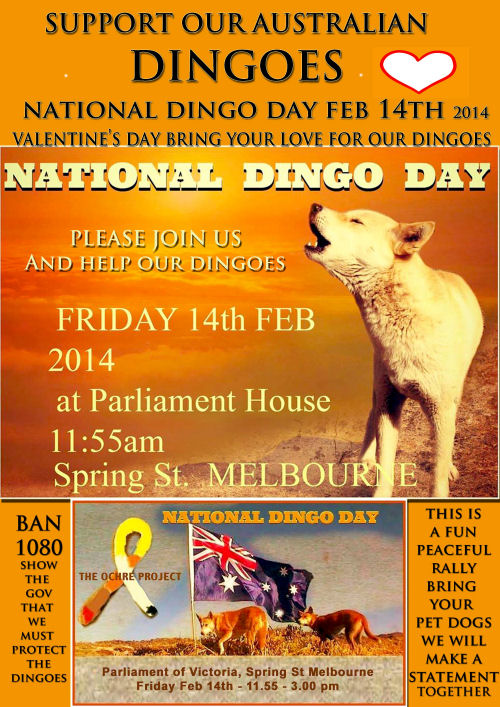 1080 being used randomly in Australia has created an environmental disaster and is pushing our native dingoes to the brink..... 5000 PLUS TO MARCH TO VOICE A PROTEST AT THE PERSECUTION OF THE DINGO IN AUSTRALIA.
1080 being used randomly in Australia has created an environmental disaster and is pushing our native dingoes to the brink..... 5000 PLUS TO MARCH TO VOICE A PROTEST AT THE PERSECUTION OF THE DINGO IN AUSTRALIA.
THIS INSANITY MUST END AND THE DISGUSTING PRACTICE OF OUR FEDERAL GOVERNMENT OF 1080 POISONING MUST END !!! IT IS A BRUTAL AND TOTALLY INHUMANE DEATH.
Melbourne, on the steps of Parliament House Spring St Melbourne 12 o’clock Midday until 3 pm
Dingo research wins top science prize November 2013
Research into the importance of dingoes to Australian ecosystems has been awarded a Eureka prize. (Credit: Getty)
An Australian Geographic supported study into the importance of dingoes has won the Eureka Prize for Environmental Research.
An Australian Geographic sponsored study which revealed the dingo’s vital role in Australian ecosystems has been awarded this year’s Eureka Prize for Environmental Research. Through this research, a team of Australian professors demonstrated the environmental significance of the dingo, a species at the centre of much debate in Australia. The findings suggest that dingoes aid in the survival of vulnerable species such as bilbies and hopping mice, by suppressing populations of introduced predators and large herbivores.
Dingo's reputation on the rise
Nicknamed Team Dingo, the scientists included Chris Johnson of the University of Tasmania, Dr Michael Letnic , University of New South Wales, Dr Arian Wallach of James Cook University, Queensland, Adam O’Neill of Evelyn Downs Station in South Australia, and Dr Euan Ritchie of Deakin University in Victoria.
“Though sometimes miscast as vermin, our research shows that dingoes are key elements in the struggle to reduce damage caused by foxes, feral cats and even kangaroos," writes Euan on his blog.
"Ecosystems with dingoes have better vegetation and more diverse and abundant populations of small native mammals. In fact, a good dose of our native dog can sustain biodiversity and help land managers control invasive species.”
Something akin to the Academy Awards of science in Australia, the annual Eureka Prizes are presented by the Australian Museum in conjunction with the New South Wales Office of Environment and Heritage. The awards honour excellence in fields of research and innovation; leadership and commercialisation; science journalism and communication; and school science. Text by Wes Judd.
Help save Inky the Dingo from bizarre Queensland law and tourism
Sad story of 3 brothers, 2 killed, one is running for his life
.
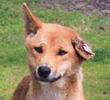 A dingo From the K'Gari Butchulla camp called "Inky "is running for his life. QPWS targets three dingo brothers for ‘crimes’ they ‘supposedly’ committed and they have been coded for destruction. Visit Youtube news story on this dingo for a news report:- http://www.youtube.com/watch?v=ypA2oeiO8Rs&list=UUdyUpJ3MnEdPLQnOuxMfAsg&index=6&feature=plcp
A dingo From the K'Gari Butchulla camp called "Inky "is running for his life. QPWS targets three dingo brothers for ‘crimes’ they ‘supposedly’ committed and they have been coded for destruction. Visit Youtube news story on this dingo for a news report:- http://www.youtube.com/watch?v=ypA2oeiO8Rs&list=UUdyUpJ3MnEdPLQnOuxMfAsg&index=6&feature=plcp
(Pic from Ch 7 Sunshine Coast QLD News)
Two have already been destroyed, one at the K'Gari camp site shot, where Inky was shot along with his brother who died. “Inky" survived but ran off with a bullet wound in his neck, developed an infected ear, is still running/ hiding terrified of the rangers. Another dingo Inky’s brother, ‘Byron’ known to be harmless, from Cathedral Beach was darted and given a lethal injection. This dingo was destroyed by QPWS on 4th Oct. 2012 before a public forum with the newly appointed FIDMS Ecosure on 5th Oct. This leaves "Inky” who, after his brother was shot at the K'Gari camp, ran off to join his other brother Byron at Cathedral beach. He is now being hunted by a trapper brought in by QPWS to trap and kill this terrified dingo.
An online vote poll asks ‘Should dingoes that attack tourists on Fraser Island be destroyed?’ It stands at 91% No and only 8% Yes- nearly 100% angry NO’s of community response. QPWS, Regional Manager Fraser Island, Ross Belcher admitted on ABC radio that this dingo and his brother, who were both killed, did not bite anyone. Why were these dingoes deemed dangerous and aggressive? They were future breeding dingoes, important to sustain another generation, but were given a death sentence based on an obscure report, and coded.
Those issuing death sentences do not understand dingo play behaviour; they behave like human male teenagers- boisterous. No more dingoes should die; there must be a complete moratorium on killing dingoes until Ecosure publish their peer reviewed FDIMS management strategy, which won't be until Feb next year. For decades, the fight to protect the F.I. Dingoes, has done little to improve the chances of these dingoes surviving for future generations. "Inky" and his brothers committed the crime of a code C..." a dingo was lying down 20 metres from a fisherman!! Other "crimes" the dingo commits, assume the dingo ‘knows the rules’: ‘loitering’ at visitor sites, stealing or ‘soliciting’ food, following people closely, generally associating with human presence’.
The QPWS term of ‘habituating’ is a ‘dingo committed crime’ Marie-Louise Sarjeant. P.A. Jennifer Parkhurst.
Notes leading up to the hunt for Inky
‘Our Fraser Island Dingoes need protection and honesty from Government which is not being provided’ AWPC Australian Wildlife Protection, President.
Hon. Steve Dickson. M.P. National Parks, Recreation, Sport & Racing…have under a current policy, the decision to authorise a “humane “destruction of a dingo that hasn’t bitten anyone. They state that ‘Issues for dingo’ destruction are because QPWS deemed it has committed a “code crime” of “habituation”. Specific details have not been given as to why Inky has to be destroyed.
(Ross Belcher from the QPWS: people were not harmed, but r it is extremely concerning dingo has not been caught)
QPWS have enlisted a paid shooter /trapper to the Island, setting a terrible precedence to bring in a person, who is effectively a pest control officer and a dingo exterminator. This is not acceptable in a Heritage Listed National Park, where fauna is supposedly protected. Dingoes on Fraser Island have learnt Rangers mean death or pain and avoid them, recognise their vehicles. Previous contentious FIDMS even states in the old management strategy, that a history of incidents and photos required and only as a last resort is the animal to be destroyed"
ABC Net news;” Trapper hunts rogue Fraser is dingo”: By Frances Adcock. 11th Oct 2012, saying that, “Up to 40 rangers are still looking for a dingo.” There are only 49 rangers there, so why waste time and money to chase down a dingo that is not a threat to anyone?
Indigenous people have signed Statutory Declarations to declare that Inky is not dangerous.
A comment written to Ross Belcher, Regional Manager Fraser Island on the Fraser Coast Chronicle:
“The dingo is allegedly a "natural feature" of the Island, interference with which is punishable by very serious fines and even, in some circumstances, imprisonment. So how then, Mr Belcher, can you justify either Rangers or a paid Shooters coming on to the Island and taking such action? Will the shooter be the subject of legal proceedings for “interference”? Will you be the subject of conspiracy to commit such a crime given your enlistment of the paid shooter?" (Marilyn Nuske Lawyer).
WHAT YOU CAN DO
Contacts to write to protest about the destruction of Inky:
[email protected] or [email protected] Ph 07 32248113
DERM dingo ranger. [email protected]
Ross Belcher Regional Manager FI: ph: 4121 1800. E:[email protected]
UNESCO: [email protected]
Mr. Young Hun JUNG UNESCO: [email protected] Please write or call to save Inky
The plight of and cruelty inflicted on Dingoes on Fraser Island - by Hans Brunner
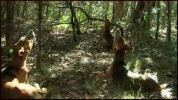 Dingoes on Fraser Island, Australia are dying of starvation, with sand and grass in their stomachs. One woman tried to alert the world to this and was sentenced and fined for her trouble. On 25th of August 2012 Jennifer Parkhusrt received a national award from the Australian Wildlife Protection Council in recognition of outstanding contributions to the preservation and protection of Australian native Wildlife. What a contrast to the treatment she received from the Queensland government!
Dingoes on Fraser Island, Australia are dying of starvation, with sand and grass in their stomachs. One woman tried to alert the world to this and was sentenced and fined for her trouble. On 25th of August 2012 Jennifer Parkhusrt received a national award from the Australian Wildlife Protection Council in recognition of outstanding contributions to the preservation and protection of Australian native Wildlife. What a contrast to the treatment she received from the Queensland government!
(Jennifer Parkhurst's website. More information about donations at end of this article.)
Dingoes on Fraser Island are protected because of their purity. This may be, at first sight an ideal situation and would find acceptance by most people and dog- or specifically dingo lovers. As for the tourist trade it has boosted the numbers of tourists to the island who wanted to have a dingo experience. From the outside it looked very good and only very committed people objectively examined how these beautiful creatures are actually managed.
One of these people is Jennifer Parkhurst and I refer to her as the Dingo Lady who has lived on Fraser Island for seven Years. She loves and adores dingoes and has observed them throughout the island. She scrutinized their behavior and took hundreds of photos of them. Her entire life was committed to them.
Frazer Island dingo pups dying of starvation, eating sand and grass
To her horror she discovered that most of the dingoes were starving and only ten percent of pups survived to adulthood. Stomachs examined of dead pups contained only grass and sand. This is partly the result of the shooting of their parents while they are desperately searching for food along the beach where tourists, who do not know how to behave, make reports of “dangerous” dingoes. But it is not only the pups that are starving. Her photos show adults with all their ribs clearly visible. When the alpha female goes looking for food and returns, her pups run eagerly towards her only to realize that she did not find food for them. Then, they scratch around in the soil to possibly find a grub or they chew on bark of woody plants like rabbits do in drought situations.
There is no game to hunt for dingoes on this island. They have become desperate scavengers and beach combers.
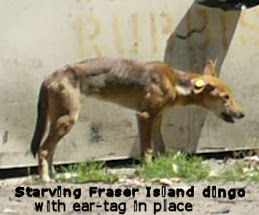
To make matters worse, large areas are unnecessarily burnt, reducing their food source and shelter even further. If one would examine the food remains found in their droppings the way it is done regularly in food habit studies on the mainland, it would surely expose embarrassing results. Often dingoes are ear-tagged and radio-collared unnecessarily as if they were criminals in order to follow their movements on this restricted island. Culling dingoes, especially adults, has serious implications for their family structure and learning, resulting in subsequent misbehavior and breeding problems. If this maltreatment of dogs in refuge and dog shelters occurred, the owners of these shelters would certainly be heavily fined and their shelters closed. What then is the difference on Fraser Island?
What is it about dingoes and women that bothers Australian governments so?
And now back to a REPEAT of the savage miss-handling of the Azaria Chamberlain Case. The dingo lady, who noticed the many starving dingoes struggling to survive, gave some poor animals a few pieces of coconut. For this she was convicted and fined $40.000 as well as sentenced to a 9 month jail term suspended for three years and has now a criminal record! She could just not control her distressed feelings for these ailing animals. The “stone-walling” of her defense and the brutality of the prosecution resulted in her inability to work and she lives now on a disability pension while she still has to pay off her fine. You can make up your own mind as to what the government is trying to hide and why they try to silence the Dingo Lady.
Dingoes were brought to this island by the Aborigines where they became dependent on the Aborigines to compensate them for the dingo’s lack of prey species. In recent years some exotic, large animals were introduced to the island which benefited the dingoes. The Forestry workers wormed and fed the dingoes, and before the island was heritage listed, rangers fed them. Fishermen were also allowed to give the dingoes their offal. But now, all these extra food sources have been removed and there is now no real hunting opportunity left for them.
Please ask for food supplements for the dingoes
I would implore people to write to their local MP’s or the federal minister for the environment, and ask that random food drops be introduced to Fraser Island. I would also ask that people request a complete moratorium on all culling of dingoes. While Fraser Island is in Queensland, and seems far away from us down here in Victoria, it is a Heritage Listed Icon of Australia and belongs to us all. One day you might like to take your children there to show them a world-famous dingo. Without action this may soon be impossible.
I was fortunate to be present when on the 25th of August 2012 the dingo Lady, Jennifer Parkhurst, received a national award from the Australian Wildlife Protection Council in recognition of outstanding contributions to the preservation and protection of Australian native Wildlife. What a contrast to the treatment she received from the Queensland government!
Hans Brunner (M. App. Sc.)
More Information
Australian Story featured Jennifer Parkhurst's horrible experiences with the law and her attempts to represent dingoes. You can see the program here: http://www.abc.net.au/austory/specials/dogsofwar/default.htm or just click on the picture at the top of this article.
Donations to help Jennifer pay her fine can be sent either to SFID or to your local Magistrates court. Payee is ‘State Penalties Enforcement Registry’ and her Party ID is: 62883053. Please be sure to get a receipt, and she asks if you would be so kind as to post her a copy of the receipt for her records, she would be most grateful.
Mail can be sent to Jennifer C/O SFID: 50 Old Maryborough Rd Pialba Qld 4655
The magistrate who convicted and so severely punished Jennifer Parkhurst with a suspended sentence and a $40,000 fine was Magistrate John Smith in a case at Maryborough Magistrates Court. Adam Randall , who was Jennifer's partner at the time and fed the Dingos with her was fined only $2500.
Hans Brunner is one of many scientists and other people who have tried to stand up for the Fraser Island dingoes. Australian Story gives others. Another example is:
Dr. Alan Wilton (1953-2011) Prominent Australian Geneticist, Assoc. Professor of the School of Biotechnology and Biomolecular Sciences at the University of NSW. Dr. Wilton devoted much of his academic life in studying the ancestry and significance of the dingo in Australia. http://savefraserislanddingoes.com/
Check out Dr Earnest Healey's Dingo Care Network here: http://home.vicnet.net.au/~dingo/ffg.htm
Necropsy Report- Horrific death of a Genetically important Fraser Island Dingo
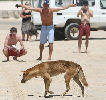 Letter from Australian Wildlife Protection Council to RSPCA: "We seek your help to insist that appropriate action be taken against the perpetrators of cruelty committed vs a Fraser Island Dingo. Freedom of Information reveals Dingo Necropsy Report of a cruel horrific death on a healthy male dingo. This cruelty has been dismissed. The tragedy was entirely preventable and is this not what the RSPCA is all about? Prevention of Cruelty to Animals?" Thanks to the Habitat Advocate for the photograph.
Letter from Australian Wildlife Protection Council to RSPCA: "We seek your help to insist that appropriate action be taken against the perpetrators of cruelty committed vs a Fraser Island Dingo. Freedom of Information reveals Dingo Necropsy Report of a cruel horrific death on a healthy male dingo. This cruelty has been dismissed. The tragedy was entirely preventable and is this not what the RSPCA is all about? Prevention of Cruelty to Animals?" Thanks to the Habitat Advocate for the photograph.
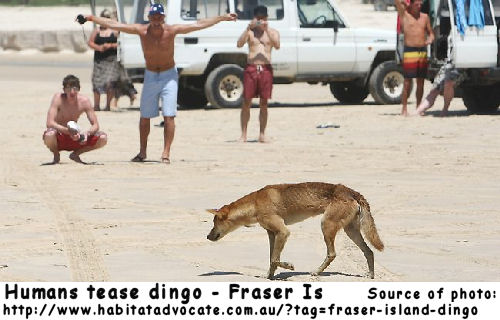
March 30 3012
Dear Ms Neil, Dr Hugh Wirth, Dr Ian Gunn, Shadow Environment Minister Greg Hunt and all others,
We seek your help to insist that appropriate action be taken against the perpetrators of cruelty committed vs a Fraser Island Dingo. Freedom of Information reveals Dingo Necropsy Report of a cruel horrific death on a healthy male dingo. This cruelty has been dismissed. The tragedy was entirely preventable and is this not what the RSPCA is all about? Prevention of Cruelty to Animals? My list is incomplete but will call on others.
This dingo was trapped causing it extreme stress and trauma and muzzled, preventing essential panting reflex.
* The dingo was further restrained by a tight loop and pole around his neck.
* The dingo was suffocated and panicked by a blanket over his head.
* These actions effectively strangled the poor dingo, causing its untimely, unnecessary death. The use of a muzzle on a restrained canid, in heat, is avoided for reasons shown – dingo cannot pant and dies.
* Do you know of any other research project that would such use an antiquated method in the year 2012
* Usually animals caught in a trap are sedated, then examined so their metabolism can be controlled.
This tragic incident should be widely reported to Animal Welfare /Ethics Committees, those that would sit in at DERM or at UQ depending on who was overseeing the research and they all should be further investigated.
This hapless dingo died in the care of DERM Rangers who say they have carried out the procedure a thousand times. But they failed to monitor the metabolism of the dingo, and caused its death in panic. Control by rangers from the Department of Environment and Resource Management (DERM) and by manager [name withheld], and those involved in this dingo’s horrific death, epitomize a total lack of empathy and humane training.
DERM stated they have trapped 1,000 dingoes, but there are reported less than 100 dingoes on Fraser Island which means that these poorly managed Dingoes suffer multiple trappings. (FOI and RTI under the 2009 Act). The death of this poor dingo demonstrates unequivocally, animal negligence and blatant cruelty.
It is incomprehensible that [name withheld] / DERM failed to protect this genetically important dingo.
This is, on its’ own, a serious crime. Dr Ian Gunn. Veterinary Professor and Senior Research Fellow stated that in all his years of experience as a Vet, Researcher and Lecturer this was the worst case of cruelty he had seen. The research started before the proposal was approved; this alone, is a serious breach of the law and should be thoroughly investigated. We ask that you seek justice for this dingo who suffered the most terrible death.
Yours faithfully
Maryland Wilson President
Australian Wildlife Protection Council (AWPC)
CC to:
Philip Woolley UK AWPC Executive International; Dr Hugh Wirth RSPCA Australia
Dr Ian Gunn Veterinary Professor Senior Research Fellow
Shadow Environment Minister, the Hon Greg Hunt [email protected]

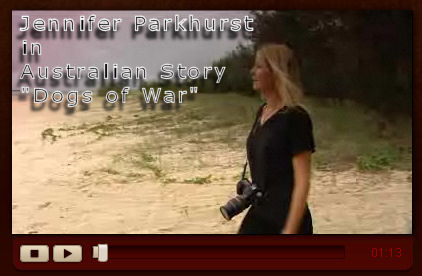
Recent comments